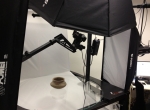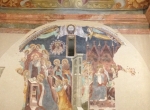28th International Grundprobleme Symposium in Nitra
2016.12.05 -
The 28th Internationales Symposion Grundprobleme der frühgeschichtlichen Entwicklung im mittleren Donauraum was held on 9-12 November 2016, traditionally, in late autumn, and traditionally, organized by the same institutions, although at times, in a different configuration: Institute of Archaeology of the Slovak Academy of Sciences (Nitra), Prehistory Commission of the Austrian Academy of Science (Vienna), Institute of Archaeology of the University of Cologne, Institute of Archaeology of the Academy of Sciences of the Czech Republic (Brno). The Grundprobleme encounters were initiated and attended regularly by prof. Herwig Friesinger, prof. Kazimierz Godłowski, prof. Jaroslav Tejral, prof. Thomas Fischer, dr Titus Kolnik and dr Karol Pieta. For two decades no longer a participant of the Symposion, prof. Kazimierz Godłowski (d. 1995) is well remembered for his lasting contribution, his impressive learning and openness to exchange views, his irreplaceable spirit can still be heard. The Professor helped blaze a trail to the lofty halls of Learning for other Polish researchers intent on the study of the archaeology of Central Europe at the close of Antiquity.
Hosted this time by the Institute of Archaeology in Nitra, the Conference focused on the subject of “Turning points along the Danube (post bellum Marcomanicum/post pugnam ad Hadrianopolem factam)”.
The Symposion was attended by archaeologists from Austria, the Czech Republic, France, Germany, Slovakia, Hungary and Poland. The latter was represented by six researchers, four of them members of the MPOV Project Team.
Several papers presented at the Conference were concerned with the Late Roman Period and the Migration Period. One of the more memorable contributions was from Michel Kazansky concerning the AD 406 invasion of the Vandals and Suebians, and archaeological finds from the Western Roman Empire. Prof. Magdalena Mączyńska reported on her attempt at separating phase C3 in the Wielbark Culture material, prof. Madyda-Legutko traced the evolution of the belt set in the Przeworsk Culture in the Late Roman Period and the Migration Period, dr hab. Judyta Rodzińska-Nowak discussed wheel-made pottery of the Przeworsk Culture of the same period, prof. Jan Schuster explored the unknown horizon of imposing elite burials in the Baltic region, while prof. Aleksander Bursche and David Wigg-Wolf interpreted the presence of Roman denarii in Late Antique assemblages north of the Danube and west of the Rhine as evidence for the Germanic identity of their owners.
We were taken on a tour of the newly restored Nitra Castle and its exciting archaeological and historical exhibition illustrating the rich past of this region eg, the origins of Christianity among the Slavs. In the evening we were invited to taste the wine from the vineyard of Château Topoľčianky near the presidential residence at Topol’čianky. However, what impressed us all the most were the new research facilities of the Institute of Archaeology in Nitra for the recording (eg, a scanner and photogrammetry lab) and storage of artefacts and archival documentation. With European Union funding the facilities have been housed in the restored Austro-Hungarian army barracks and have prospects of a long-term future development. This is something that the Polish and Central European archaeologists can definitely envy their Slovak colleagues.
-
 full resolution
full resolution
Fig. 1. Digitizing the collections in the Institute of Archaeology of the Slovak Academy of Sciences in Nitra (photo A. Bursche)
-
 full resolution
full resolution
Fig. 2. Wall paintings in Saint Emmeram’s Cathedral in Nitra (photo A. Bursche)
-
 full resolution
full resolution
Fig.. 3. Riesling Rýnski wine aged in the cellars of Château Topoľčianky (photo A. Bursche)


